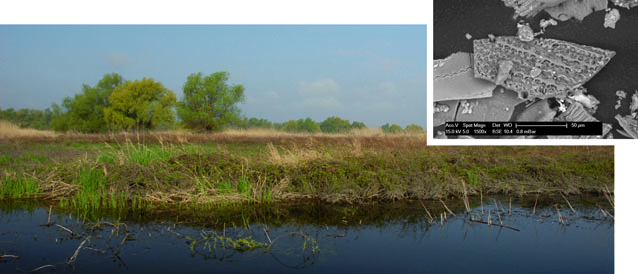
Phytolith evidence of cereal processing in the Danube Delta
- Post by: Doris Barboni
- April 30, 2019
- Comments off
Danu Mihaela, Messager Erwan, Carozza Jean-Michel, Carozza Laurent, Bouby Laurent,Philibert Sylvie, Anderson Patricia, Burens Albane,Micu Cristian, 2019. PPhytolith evidence of cereal processing in the Danube Delta during the Chalcolithic period. doi: https://doi.org/10.1016/j.quaint.2018.03.033
The paper presents the Eneolithic relationship between human and environment in a rarely researched area: the Danube Delta. Research was focused on the Taraschina site where there’s a multilayer settlement belonging to the Gumelnița Culture. Data from two cores (C12 in the tell, and C10 located near the tell) have been analyzed. Although the results are preliminary, this study provides information on the subsistence activities of the Chalcolithic communities established in the Danube Delta. Phytoliths were very abundant and exceptionally well preserved in the archaeological sequence, as well as in the sequence extracted around the site. Phytolith assemblages highlighted an important signal of cereal processing on the site of Taraschina. Massive presence of elongate dentritic phytoliths and silica skeletons in C12 provided evidence that the grain were processed in this site. This observation was confirmed in core extracted near the tell (C10). This study suggests that Chalcolithic populations of Gumelniţa Culture could possibly grow cereal in the heart of the Delta, 6000 years ago. This is also confirmed by the presence of carbonized grain, especially Hordeum vulgareand Triticum dicoccum. The decline of human influence was also discovered, as the decrease of phytoliths in the upper layers and the simultaneous rise of aquatic environment markers (diatoms, sponge spicules).

